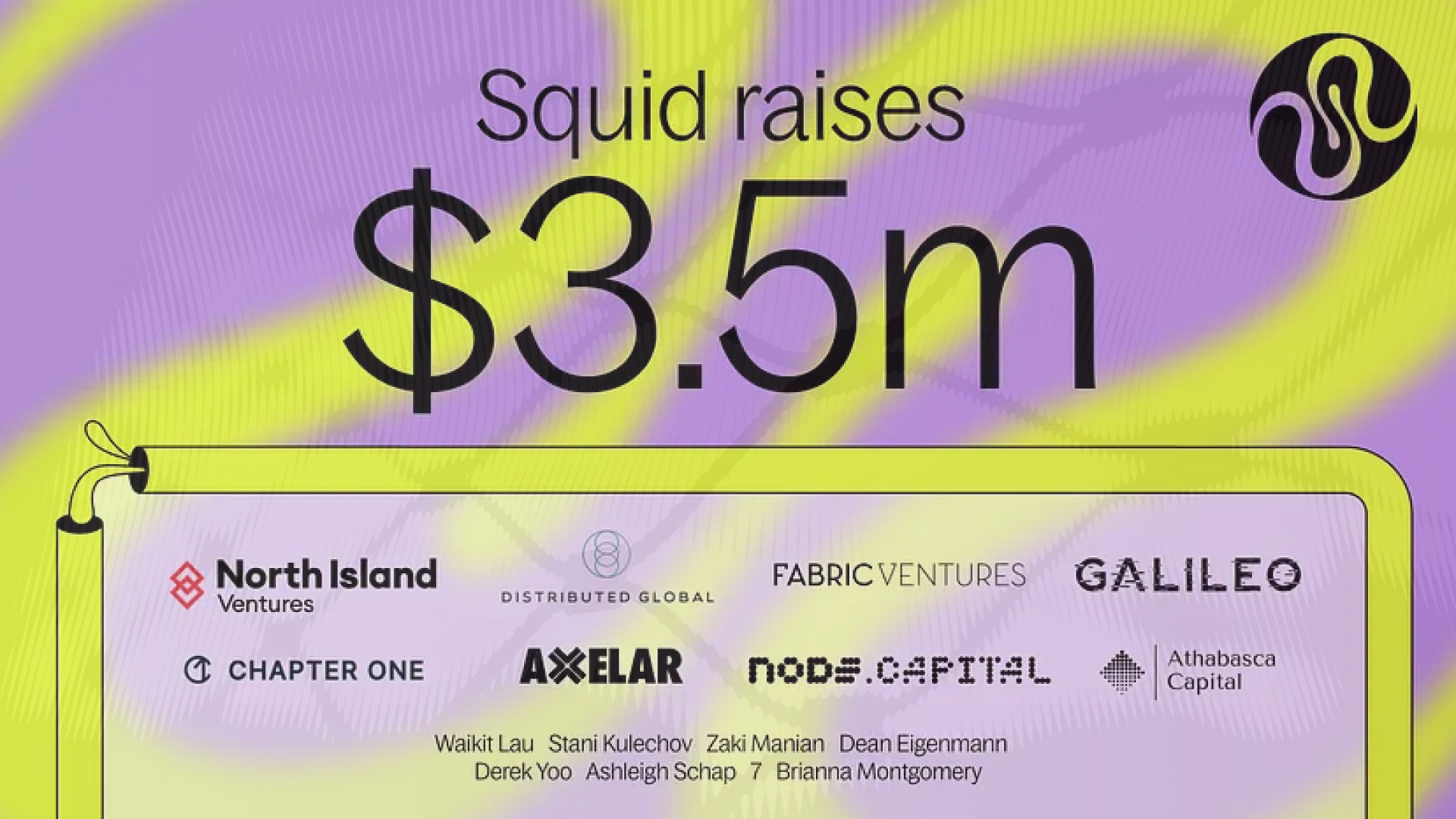Squid Protocol, an interoperability protocol for DeFi applications, has raised $3.5 million in a seed funding round led by North Island Ventures, with participation from Distributed Global, Fabric Ventures, Galileo, Chapter One, and Noble Capital.
The protocol describes itself as a bridge between dApps and a host of blockchains with varying use cases, working as an interoperability layer for various Cosmos ecosystems, as well as current EVM-compatible blockchains (Ethereum Virtual Machine). Squid is now currently live on Ethereum, Moonbeam, Binance Chain, Arbitrum, Avalanche, Polygon, Fantom, Injective, Fetch, Ki, Regen, Umee, Terra-2, Agoric, Secret Network, Juno, Kujira, Osmosis, Crescent, EVMos, and Celo, among others. Forthcoming integrations include BitKeep, Ledger, QuickSwap, and Pangolin. Further integrations are also being worked on for SpookySwap, StellaSwap, and Trisolaris.
According to Axelar, the secure cross-chain messaging infrastructure for Web3 over which Squid was built on top of, their primary investment with the Squid protocol is a strategic move, especially given what has happened with centralized exchanges such as FTX, Celsius, and related firms that collapsed in 2022's drastic, industry-wide decline. These events, taken together, have led to of the worst bear downturns yet in the crypto and blockchain industry's recent history.
These issues are, however, are supposedly being addressed by experimental features from within Squid Protocol's development roadmap. There's a point of contention here, though. Native swaps, for example, are said to be readily available on the protocol. At the same time, native swaps have often been the target of the largest and most recent DeFi hacks, employing attack vectors such as front-running bots and flash-loan exploitation, among other methodologies.
The protocol's GitHub documentation reveals that it has been ramping up engineering efforts with the introduction of finely-tuned software development kits and API integration packages set to provide multiple swaps and on-chain function calls to be linked across EVM-compatible and Cosmos-integrated chains.
"[The] failure of centralized trading platforms has highlighted the need for secure decentralized alternatives. Squid powers this future by enabling decentralized, secure, and simple to use cross-chain swaps," shares Sergey Gorbunov, a co-founder at Axelar.
The DeFi sector is increasingly looking towards interoperability solutions that can bridge any two DeFi protocols that would otherwise have been natively incompatible by design. On a personal note, this writer sees these movements towards interoperability as an opportunity for blockchain ecosystems and tools to further widen accessibility and usability, especially given how we might consider DeFi and Web3 as emerging sectors which, in about a decade more or so, would reach a more rapid pace in terms of infrastructural maturity and long-term viability.
In principle, Squid lets users swap any compatible token between blockchains, acting as both a router and bridge. With this process, Squid provides cross-chain liquidity and opportunities for scaling projects well beyond their initial reach and access. Theoretically, however, cross-chain liquidity is limited in that it can only provide additional liquidity for DeFi transactions involving borrowing and lending, a method that virtually flattens the field of competition among exchanges, given how it leverages movements in DeFi through decentralized exchanges, as compared to centralized exchanges.
Disclaimer: This article is provided for informational purposes only. It is not offered or intended to be used as legal, tax, investment, financial, or other advice. Opinions stated herein are solely of the author's, and hence do not represent or reflect CryptoDaily's position on the matter.
Investment Disclaimer













